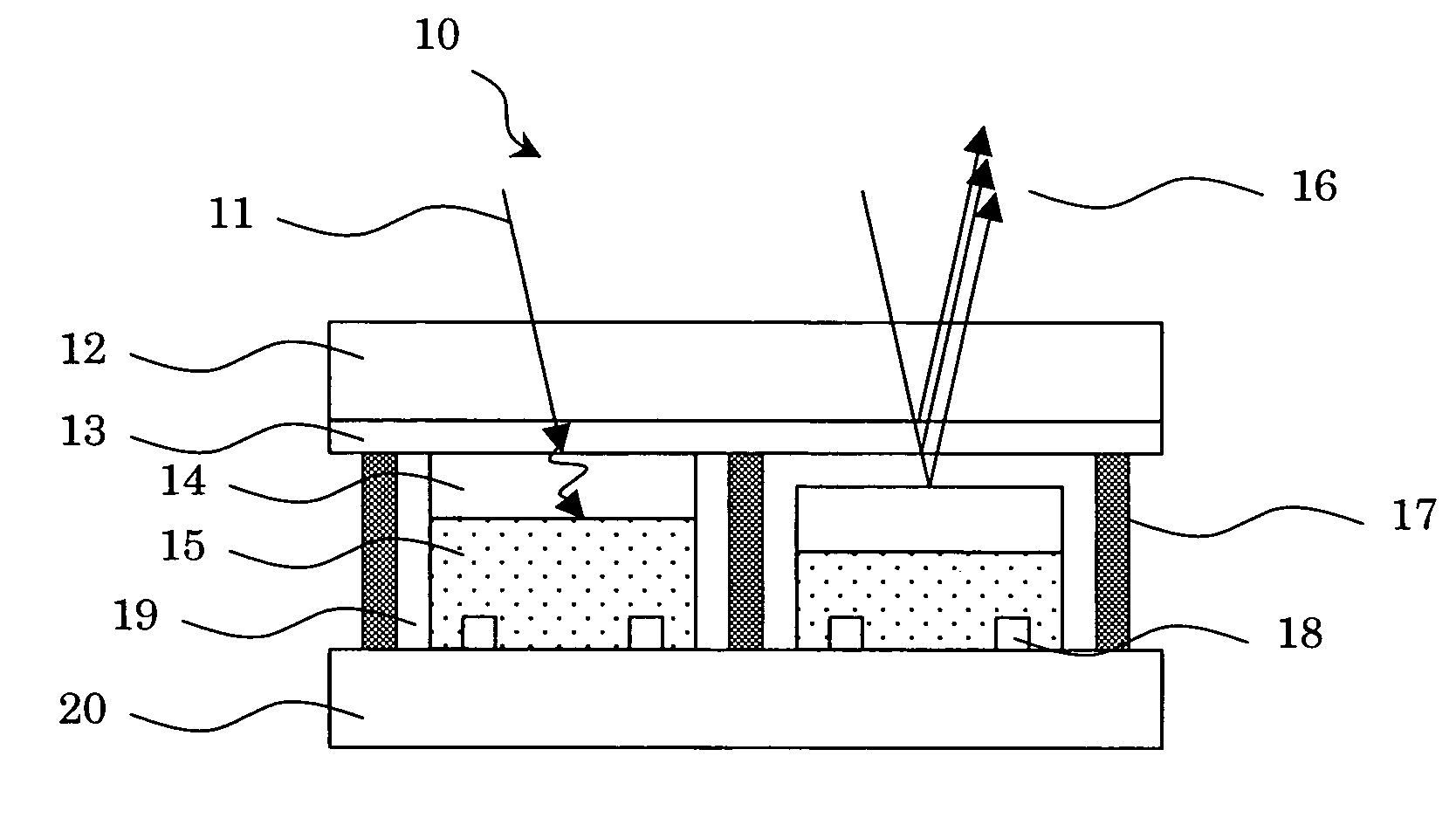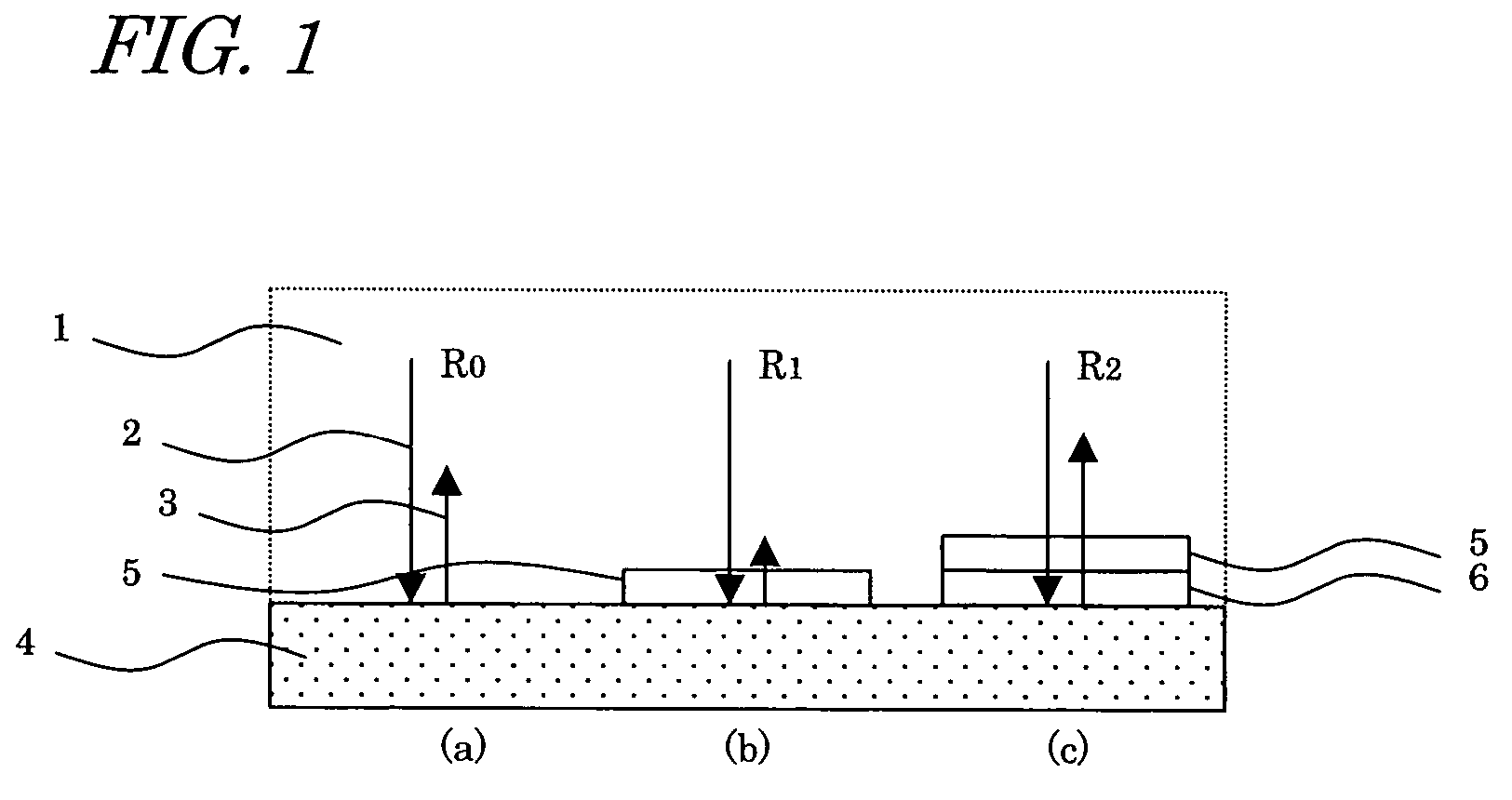Interferometric modulator and display unit
a technology of interferometry and modulator, applied in the field of interferometry modulator and display unit, can solve the problems of chromatic aberration depending on the viewing angle, lower contrast of display methods, impracticality,
- Summary
- Abstract
- Description
- Claims
- Application Information
AI Technical Summary
Benefits of technology
Problems solved by technology
Method used
Image
Examples
embodiment 1
(Embodiment 1)
[0074]FIG. 3 is a schematic view showing the configuration of a reflection type display unit 10 according to a first embodiment of the invention. The reflection type display unit 10 has a plurality of interferometric modulators arranged like a matrix, in which each interferometric modulator constitutes a pixel, for example. FIG. 3 shows two pixels of the reflection type display unit, namely, two interferometric modulators, in which the left interferometric modulator is in a black display state (a state with the smallest reflectance) and the right interferometric modulator is in a white display state (a state with the largest reflectance).
[0075]Each of the interferometric modulators making up the reflection type display unit 10 includes a transparent substrate 12, an optical thin film 13 provided on the transparent substrate 12, and an absorber layer 14 having the variable distance of a gap to the optical thin film 13.
[0076]The absorber layer 14 is formed on a driving e...
embodiment 2
(Embodiment 2)
[0122]FIG. 7 is a schematic view showing the configuration of a reflection type display unit 30 according to an embodiment 2 of the first aspect of the invention.
[0123]Each of the interferometric modulators making up the reflection type display unit 30 includes a transparent substrate 32, an optical thin film 33 provided on the transparent substrate 32, and an absorber layer 34 having the variable distance of a gap to the optical thin film 33.
[0124]The absorber layer 34 is formed on a driving element 35 provided on a substrate 40. The substrate 40 and the transparent substrate 32 (herein the optical thin film 33 formed on the transparent substrate 32) are spaced at a predetermined interval and fixed by the spacer walls 37. The spacer walls 37 enclose a medium 39 filling a gap formed between the absorber layer 34 and the optical thin film 33. The piezoelectric element 35 is controlled by one pair of electrodes 38.
[0125]When the absorber layer 34 and the optical thin fil...
embodiment 3
(Embodiment 3)
[0140]FIG. 9 is a schematic view showing the configuration of a reflection type display unit 50 according to an embodiment 3 of the second aspect of the invention.
[0141]Each of the interferometric modulators making up the reflection type display unit 50 includes a transparent substrate 52, a stacked film 53 provided on the transparent substrate 52, and an absorber layer 54 having the variable distance of a gap to the stacked film 53. The stacked film 53 has three or more transparent thin film layers, the complex indexes of refraction of two adjacent transparent thin film layers being mutually different. The stacked film 53 as shown here has an alternate stacked film in which a first transparent thin film layer 53a having a larger refractive index and a second transparent thin film layer 53b having a smaller refractive index are alternately stacked, and a third transparent thin film layer 53c opposed to the absorber layer 54 provided on the alternate stacked film. Emplo...
PUM
 Login to View More
Login to View More Abstract
Description
Claims
Application Information
 Login to View More
Login to View More - R&D
- Intellectual Property
- Life Sciences
- Materials
- Tech Scout
- Unparalleled Data Quality
- Higher Quality Content
- 60% Fewer Hallucinations
Browse by: Latest US Patents, China's latest patents, Technical Efficacy Thesaurus, Application Domain, Technology Topic, Popular Technical Reports.
© 2025 PatSnap. All rights reserved.Legal|Privacy policy|Modern Slavery Act Transparency Statement|Sitemap|About US| Contact US: help@patsnap.com



